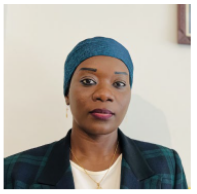DATE/TIME: Wednesday, October 8, 2025, 5:00 pm
Fadji Maina
NASA Goddard Space Flight Center and University of Baltimore, Baltimore County
Towards Reliable Hydrological Estimates in a Changing Environment
Understanding water availability is essential for societies facing both natural variability and longtenn climate change. However, accurate modeling and prediction remain challenging due to limited hydrnlogical data, the complexity of the water cycle, and human influences such as land use change, groundwater extraction, and irrigation. To address these challenges, satellite observations are increasingly integrated with hydrological and land surface models through data assimilation frameworks, reducing uncertainties and improving water resource estimates. In High Mountain Asia - where warming rates are among the world's highest and river headwaters sustain billions - this approach has improved understanding of warming-driven processes such as rain-on-snow events and revealed how climate variability and human water use jointly drive vegetation greening and streamflow decline. In South America, it has elucidated how interactions between precipitation and vegetation dynamics can buffer the impacts of heatwaves. Despite these advances, more progress is needed to capture the coupled waterenergy cycle and fully understand changing hydrological regimes. Emerging tools such as ParFlow-LIS, an advanced land surface-hydrologic model that explicitly simulates surface, subsurface, and groundwater processes, and NLDAS-3, a high-resolution, multi-source dataset integrating satellites, gauges, and reanalyses for North and Central America, are paving the way for more accurate, higherresolution estimates. Collectively, these efforts provide actionable tools to reduce uncertainty, strengthen hazard preparedness, and support sustainable water management in vulnerable regions.
Seminar Host:
Rutgers CEE Fall 2025 Graduate Seminar
Department of Civil and Environmental Engineering



